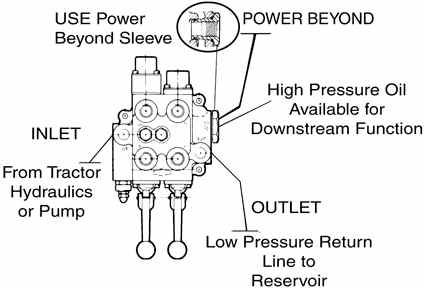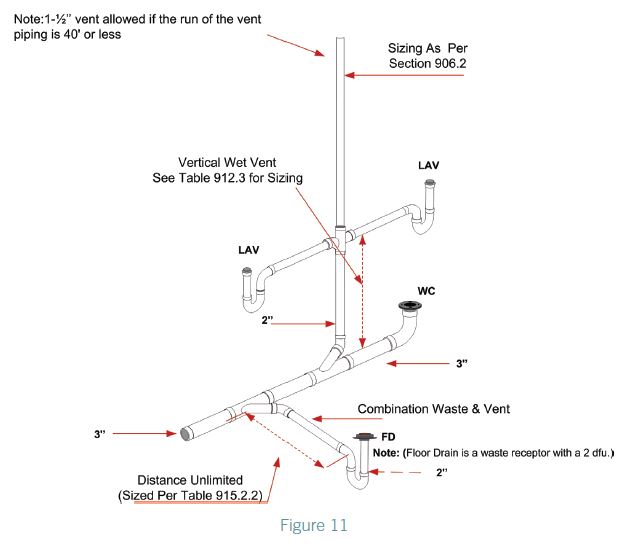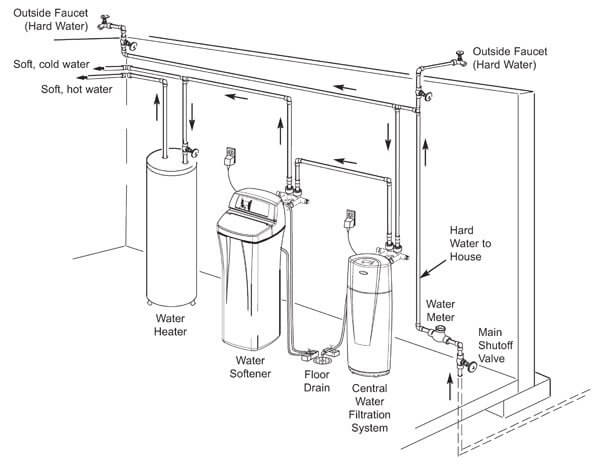How Do You Install A PVC Repair Coupling?
A PVC repair coupling is a great way to quickly and easily fix a broken or leaking pipe. This type of repair is a simple and cost-effective solution that can save you time and money, especially if you don’t have the time or resources to replace the entire pipe. Installing a PVC repair coupling is a straightforward process that can be completed with a few basic tools. With the right materials and instructions, you can have your PVC pipe repaired in no time.
Tools Needed for Installation
Installing a PVC repair coupling requires a few basic tools. Before you begin the installation process, it is important to grab the following items: PVC glue, a hacksaw, a knife, a measuring tape, PVC primer, and a PVC repair coupling. Each tool serves an important purpose and can make the installation process much easier.
Using a measuring tape is essential in order to measure the PVC pipe that is being repaired. This will help ensure that the repair coupling fits correctly and securely. A hacksaw or knife can be used to cut the PVC pipe, if necessary. Finally, PVC glue and primer should be used to ensure that the repair coupling is properly bonded and sealed to the pipe.
Having the right tools is essential for a successful PVC repair coupling installation. Take the time to ensure that you have all the necessary tools before beginning the installation process. Following these steps can help you get the job done quickly and correctly!
Step-by-Step Guide to Installing a PVC Repair Coupling
PVC pipes are a great way to provide long-lasting water or drainage systems, but sometimes they need replacing or repair. A PVC repair coupling is a great way to fix a pipe without the need for an entire replacement. Installing a PVC repair coupling is simple if you follow some basic steps.
First, make sure you have the right size PVC repair coupling for the job. Cut the damaged pipe to size, and also cut a new section of pipe to bridge the gap between the two ends. Next, attach the new section of pipe to one of the ends of the damaged pipe. Now, place the PVC repair coupling over the two ends of the pipe, making sure to align the coupling with the orientation of the existing pipe.
Secure the PVC repair coupling with clamps or screws, depending on the type of coupling you are using. Check for tightness and seal any gaps or cracks with plumber’s putty. Finally, fill the gap between the two ends of the pipe with PVC cement or sealant. Allow the sealant to dry completely before testing the pipe.
Following these steps should help ensure that you have a successful PVC repair coupling installation. Remember to always wear safety equipment such as gloves and goggles when handling sharp objects or dealing with any type of chemical. If in doubt, contact a professional plumber for assistance.
Troubleshooting Tips
PVC repair couplings are an essential part of any plumbing system, but they can be difficult to install if you don’t know what you’re doing. Whether you’re an experienced do-it-yourselfer or a novice, here are some tips to ensure your PVC repair coupling installation is successful.
First, make sure you have all the necessary tools and supplies. This includes a pipe cutter, adjustable wrench, utility knife, PVC primer, PVC glue, and of course, the repair coupling.
Next, measure the pipes that will be connected to the repair coupling. This will help you determine the length of the coupling needed. Once you’ve determined the size of the repair coupling, cut the PVC pipes to the appropriate length.
Next, use the PVC primer and glue to create a watertight seal. Apply the primer to the inside and outside of each PVC pipe and to the outside of the repair coupling. Once the primer has dried, apply a bead of glue to the inside of each pipe and the outside of the repair coupling.
Finally, connect the two pipes to the repair coupling, making sure the ends are properly aligned. Use the adjustable wrench to tighten the coupling onto the pipes. Allow the glue to dry completely before testing the repair.
By following these tips, you can ensure that your PVC repair coupling installation is successful and your plumbing system remains leak-free.

Advantages of Using PVC Repair Couplings
PVC repair couplings are an efficient, cost-effective solution for repairing damaged PVC pipes. Not only are they easy to install, but they also provide many advantages over traditional repair methods. From improved water pressure to increased durability, PVC repair couplings can improve the integrity of any plumbing system.
One of the primary advantages of PVC repair couplings is their ability to reduce water pressure. By providing a tight seal, these couplings reduce the risk of water leakage and improve the overall pressure of a plumbing system. This can significantly reduce water bills and help prevent future plumbing problems.
Another advantage of PVC repair couplings is their durability. Since these couplings are made from PVC, they are highly resistant to corrosion, cracking, and other forms of damage. This makes them an ideal choice for repairs, as they are designed to last for many years.
Finally, PVC repair couplings are easy to install. Not only are they available in a variety of sizes and configurations, but they also require minimal tools and equipment. This makes them an ideal choice for DIYers who are looking to repair their broken pipes quickly and easily.
Overall, PVC repair couplings offer many advantages over traditional repair methods. Not only do they reduce water pressure and increase durability, but they are also easy to install. With their cost-effective design and wide range of applications, PVC repair couplings are an excellent choice for anyone looking to repair their plumbing system.
Safety Considerations when Installing PVC Repair Couplings
Installing PVC repair couplings is a straightforward process but there are a few safety considerations to bear in mind. To begin, it’s important to wear safety glasses and protective gloves when handling and installing PVC repair couplings, as well as any other plumbing tools and components. After all, the possibility of sharp edges is always a possibility. It’s also important to ensure that you’re working in a well-ventilated area and to use a mask to prevent the inhalation of any dust or fumes. Additionally, it’s important to wear long sleeves and pants to protect your skin from contact with any hot surfaces, such as pipes and fittings. Finally, it’s essential to shut off the water supply before attempting to install a PVC repair coupling to prevent any potential injuries due to leakage. Following these safety considerations will ensure that you can safely and confidently install PVC repair couplings.
Alternatives to PVC Repair Couplings
PVC repair couplings are a great way to repair a broken PVC pipe, but are not the only option. Depending on the application, there are a variety of alternatives to PVC repair couplings that can be used. These include: adhesive-based repair products, compression fittings, slip coupling repairs, and even pipe repair tape.
Adhesive-based repair products are applied to the outside of the pipe to seal any cracks or holes that have been made. This can be a good alternative to a PVC repair coupling as it is easier to install and can be used in more confined spaces.
Compression fittings are often used to join two pieces of pipe together, and can also be used to repair a broken pipe. They are easy to install and require minimal tools, making them a great alternative to a PVC repair coupling.
Slip coupling repairs are a great way to repair a broken PVC pipe without the need for a PVC repair coupling. This involves cutting out the broken portion of the pipe and then replacing it with a new one. Slip couplings can be used in both above and below ground applications.
Pipe repair tape is a great solution for smaller cracks or holes in a PVC pipe. This tape is applied directly to the pipe and will provide a waterproof seal. This is an ideal alternative to a PVC repair coupling if the repair size is small enough.
No matter what kind of PVC repair you are doing, there are a variety of alternatives to PVC repair couplings available. Depending on the application, you may find that one of the above alternatives is a better solution than a PVC repair coupling.
FAQs About the How Do You Install A PVC Repair Coupling?
1. What tools do I need to install a PVC repair coupling?
A: To install a PVC repair coupling, you will need a hacksaw, a pipe cleaner, PVC glue, and a clamp.
2. How do I ensure a successful installation of the PVC repair coupling?
A: To ensure a successful installation, you should make sure that the coupling is compatible with the existing pipe, make sure the PVC is clean and dry before applying the glue, and be sure to use the correct amount of glue on both the pipe and the coupling.
3. Is it possible to install a PVC repair coupling without glue?
A: No, you must use PVC glue to install the PVC repair coupling. Without glue, the coupling will not be secure and could potentially leak.
Conclusion
Installing a PVC repair coupling is a simple and effective way to fix a broken or damaged PVC pipe. It is quick and easy to do, requiring only a few basic tools and supplies. The repair coupling is simply inserted into the existing pipe and secured with a few simple screws. The repair coupling will provide a strong, reliable, and watertight seal to the repaired pipe. With the right tools and a bit of time, anyone can easily install a PVC repair coupling and repair their damaged PVC pipe.







